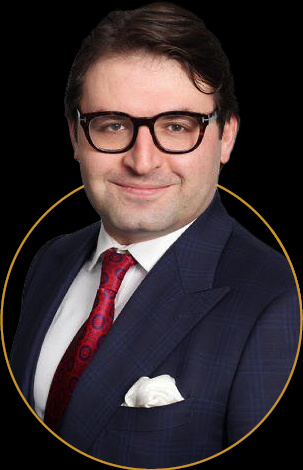Fortescue Metals Group Ltd (‘Fortescue‘, the ‘Group‘, ASX: FMG) is Australia’s third-largest iron ore producer, conducting its operations in the Pilbara region of Western Australia, from three mining hubs that are supported by fully integrated rail and seaport facilities located at Port Headland. These facilities are complemented by a tug fleet and eight purpose-built 260,000 tonne capacity Ore Carriers.
The Group has recently embarked on a decarbonisation strategy and is progressing to become an integrated player in the renewables and green resources sector, on a global scale. It is currently developing a global portfolio of renewable energy and green hydrogen projects. The strategy seeks to use 100 percent renewable energy to produce green electricity, green hydrogen, green ammonia, and other green industrial products, to de-carbonise the steel, power generation and transport industries. This strategy is in support of Fortescue’s stated intention to achieve carbon neutrality in its own operations by 2030 and in its customers’ operations by 2040.
Higher realised iron ore prices combined with the second highest first-half shipments in the Group’s history at 94.6 million tonnes have bolstered Fortescue’s Net Profit After Tax (NPAT) to US$3.3 billion. This December 2023 half-year profit result is backed by net operating cash flow of US$4.2 billion. NPAT was up 41 percent from the prior corresponding period and represents earnings per share of US$1.08, equivalent to A$1.66 per share.
In a move that signals confidence in the sustainability of the Group’s strong cash flow, the Board has declared a fully franked interim dividend of A$1.08 per share which is 44 percent higher than the FY23 interim dividend. The dividend represents a payout ratio of 65 percent of the first half-year profit of the 2024 financial year and is payable on 27 March.
Iron ore shipments for the first half-year totalled 94.6 million tonnes and are expected to remain at this level in the foreseeable future given full year 2024 guidance stands at 192 – 197 million tonnes. Other factors supporting the 65 percent pay-out ratio are the conservatively structured balance sheet with a 22 percent gross gearing ratio at US$5.3 billion gross debt, minus US$4.7 billion cash on hand, which leaves US$0.6 billion net debt for a 3 percent net gearing ratio. This compares to net debt of US$1 billion at 30 June 2023.
Fortescue is a low-cost operator as indicated by the Group’s impressive underlying EBITDA margin at 62 percent, based on US$9.5 billion revenue and US$5.9 billion underlying EBITDA. The US$9.5 billion revenue outcome was 21 percent above the 2023 first half-year result because of a healthy increase in the realised iron ore price at US$108 per dry metric tonne, up 25 percent from US$87 per dry metric tonne for the first half-year of 2023.
Future Strategy
Funding is in place to finance Fortescue’s diversification strategy into various global green energy projects collectively known as ‘Fortescue Energy’. Progress has been achieved on various projects including a Final Investment Decision (FID) on the Phoenix Hydrogen Hub, USA and the Gladstone PEM50 Project in Queensland and reaching a FID for US$50 million to construct a Green Iron Trial Commercial Plant at the Christmas Creek mine site. Fortescue has also launched Fortescue Capital, a green energy investment platform headquartered in New York City.
These decisions highlight Fortescue’s intention to build a global integrated green technology and metals business at a time when Fortescue’s core iron ore business is achieving near record shipments and price realisation. Fortescue’s low grade and relatively cheaper iron ore is in strong demand from Chinese steel mills focused on conserving costs and maintaining margins in a subdued Chinese economy.
Fortescue’s cash balance of US$4.7 billion at 31 December 2023 leaves the Group well positioned to finance its green energy ambitions.
2024 financial year guidance
Fortescue have guided the market to expect the current iron ore shipment levels to be maintained for the remainder of FY24. However, the future iron ore price is the other key determinant of Fortescue’s share price performance and iron ore prices are heavily dependent on the strength of China’s economy which grew by 5.25 percent in FY23.
Provided the Chinese economy stabilises at around current growth levels, the price for Fortescue’s low-grade iron ore should prove resilient given the buying support from Chinese steel mills seeking to conserve margins in the face of weakness in China’s construction and property sector. This outcome should maintain Fortescue’s current growth trajectory while over time Fortescue’s single commodity exposure is offset by the Group’s green energy strategy. This strategy includes a US$500 million commitment to the Phoenix Hydrogen Hub in the USA and a US$150 million commitment to the 50-megawatt green hydrogen production plant in Gladstone, Queensland.

Michael Kodari is a globally recognised investor, philanthropist, and leading financial markets expert, renowned for his exceptional performance. With a strong foundation in financial markets, Michael has advised leading financial institutions and governments.
Chifley Tower, 2 Chifley Square,
Sydney NSW 2000
1300 854 151
© 2025 KOSEC | Kodari Securities Pty Ltd | ABN 90 147 963 755 | FSG | Terms & Conditions | Disclaimer & Legal
© 2025 KOSEC | Kodari Securities Pty Ltd
ABN 90 147 963 755
KOSEC - Kodari Securities does not provide any investment advice, nor is anything mentioned an offer to sell, or a solicitation of an offer to buy any security or other instrument. Anything discussed is for informational purposes only and does not address the circumstances or needs of any particular individual or entity. Investing in the stock market is high risk. Under no circumstances should investments be based solely on the information provided. We do not guarantee the security or completeness of information on this website and are not held liable. Kodari Securities PTY Ltd trading as KOSEC is a corporate authorized representative (AFSL no.246638) which is regulated by the Australian securities and investment commission (ASIC).